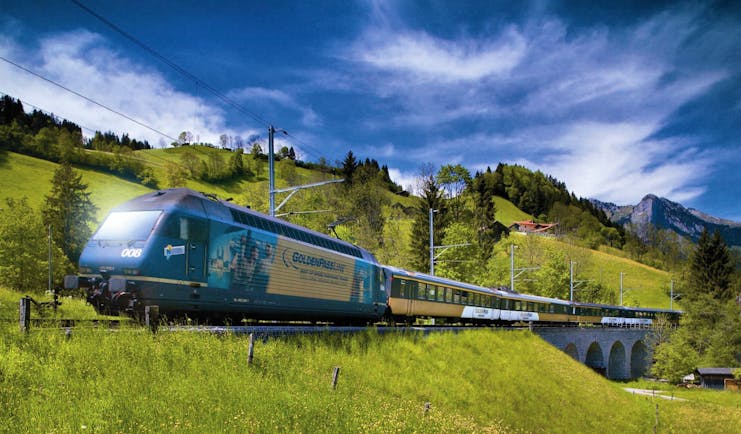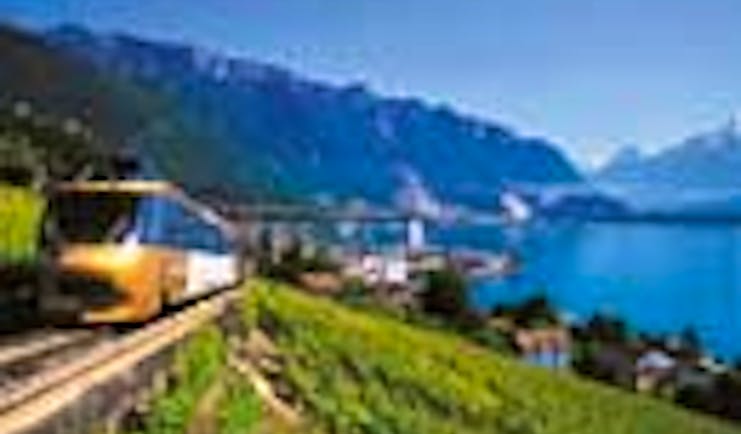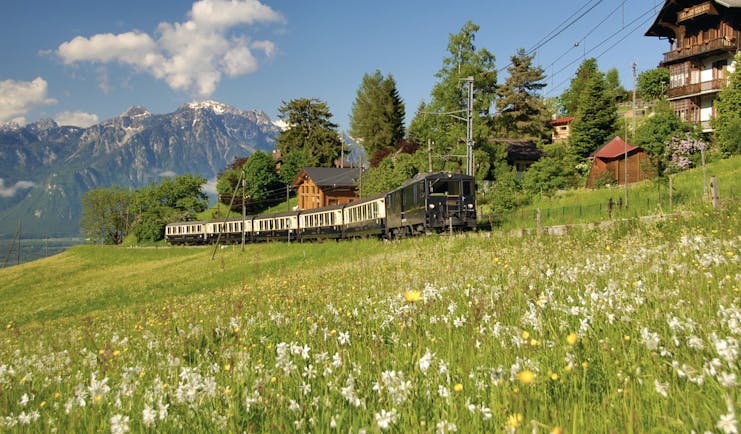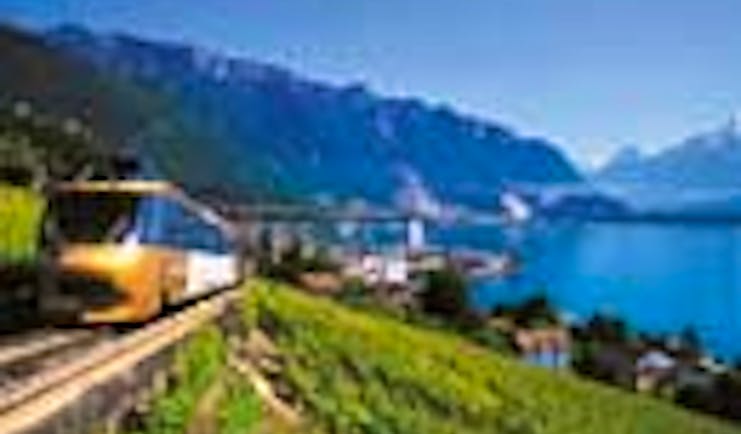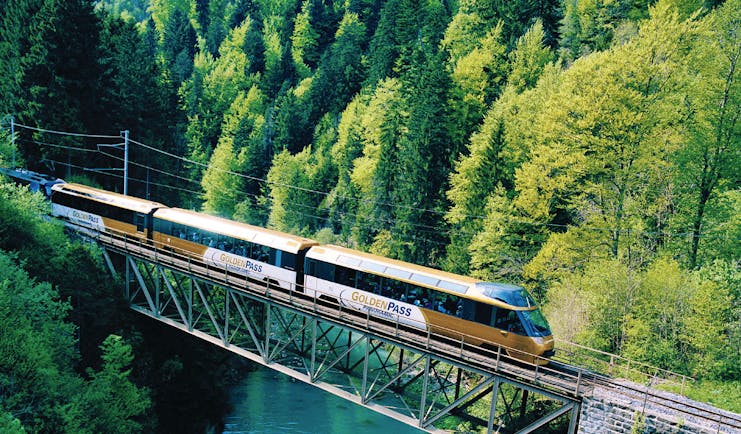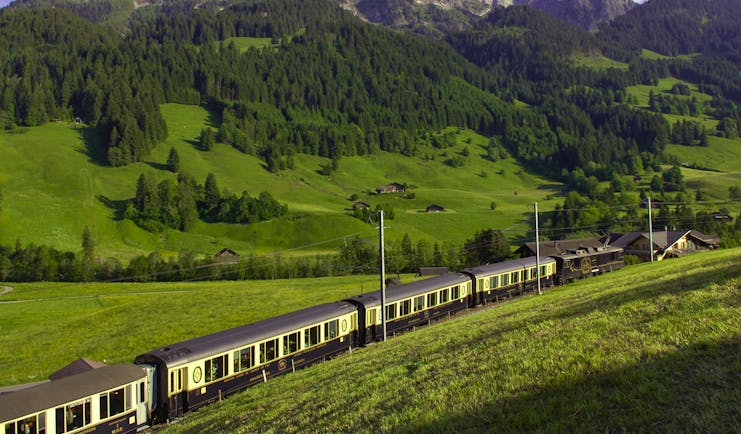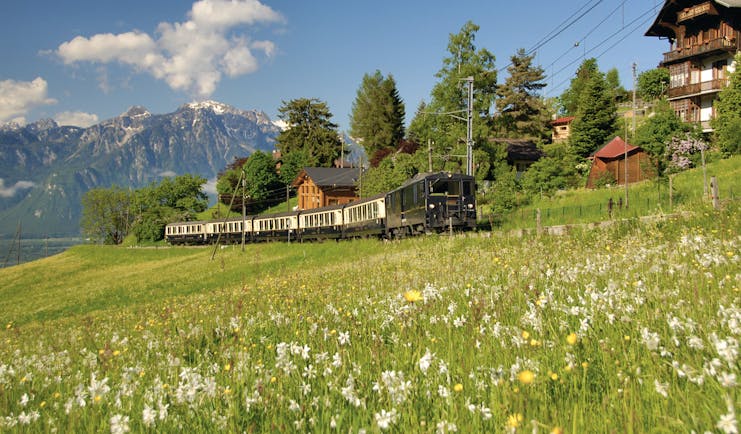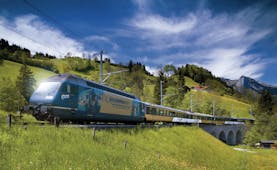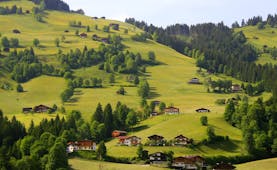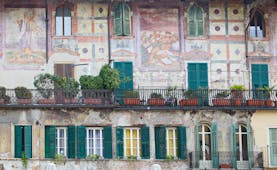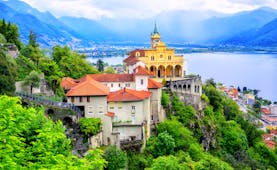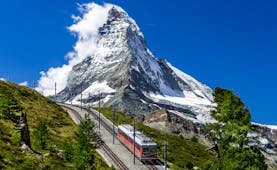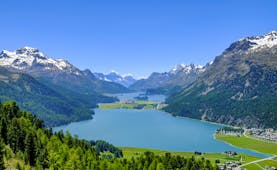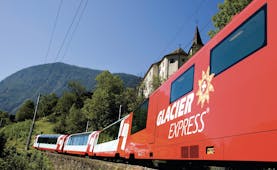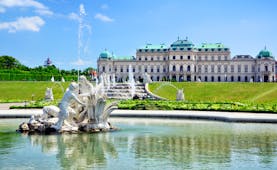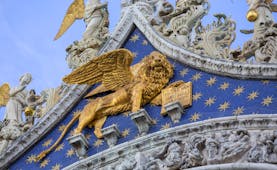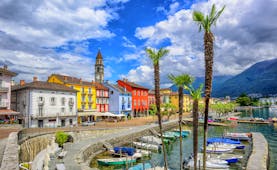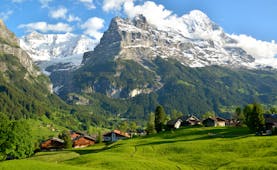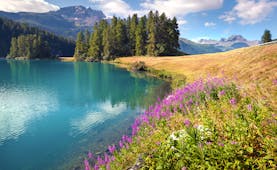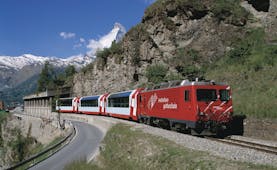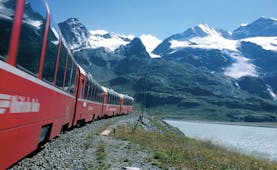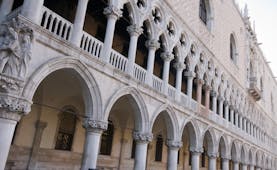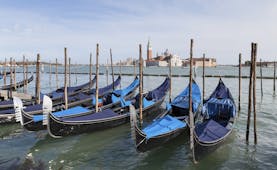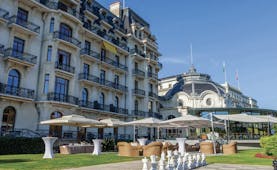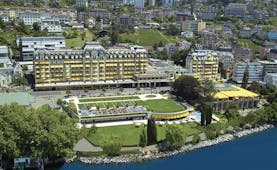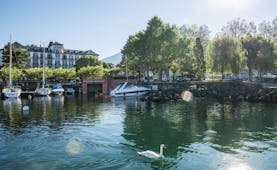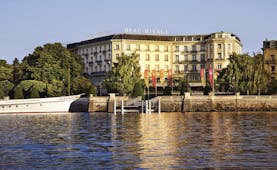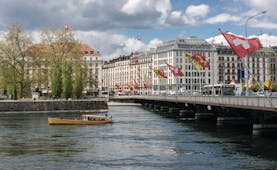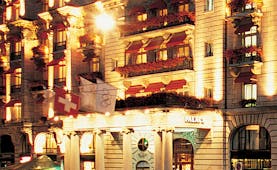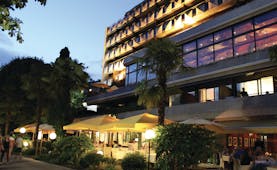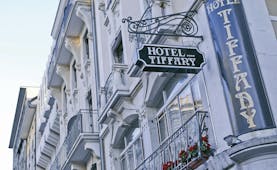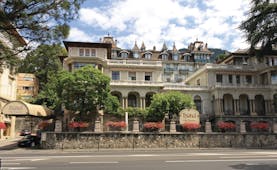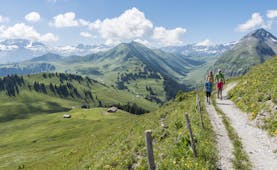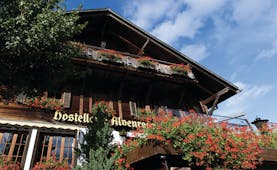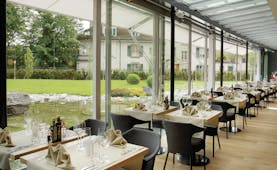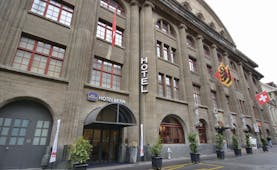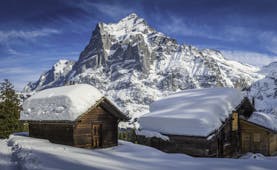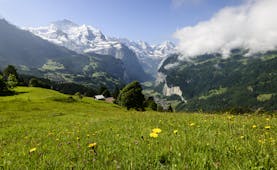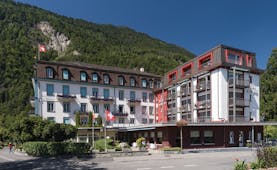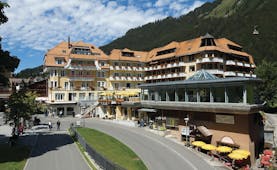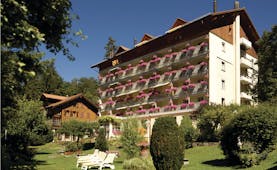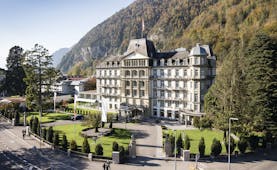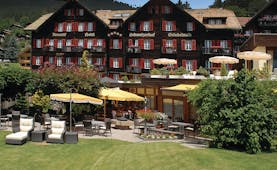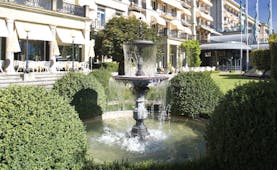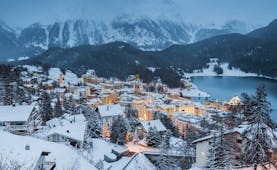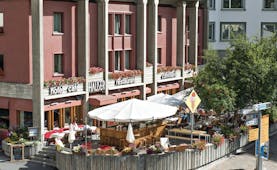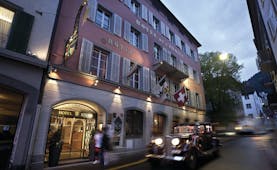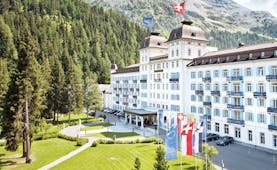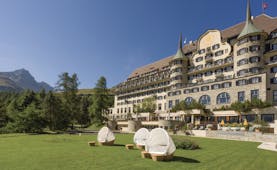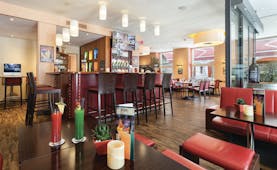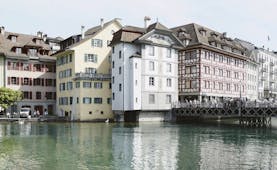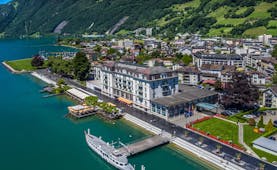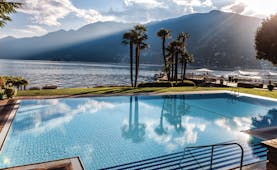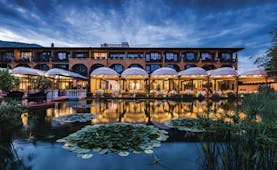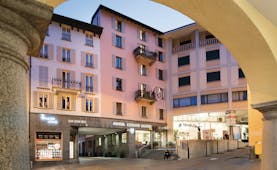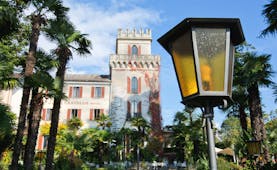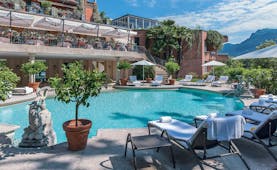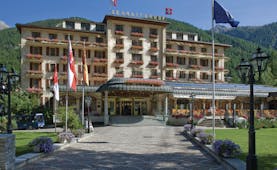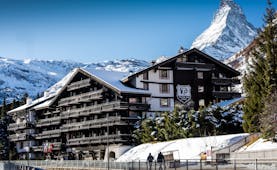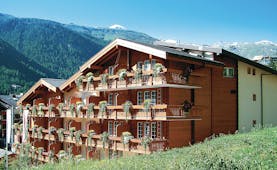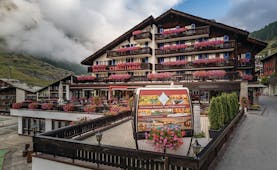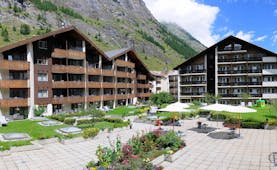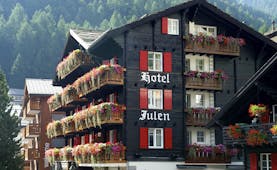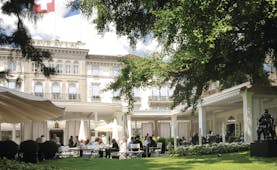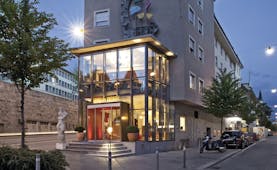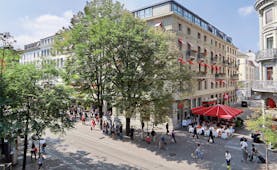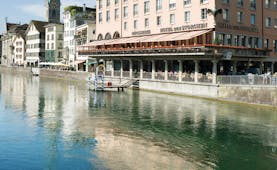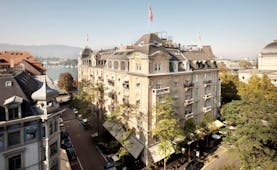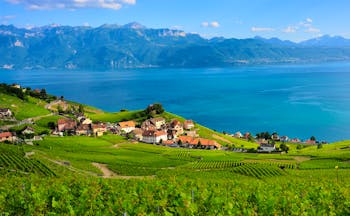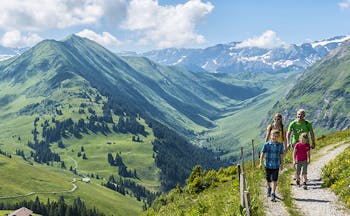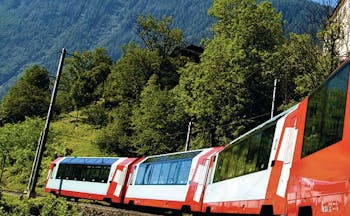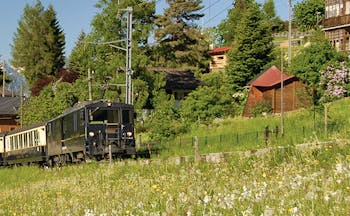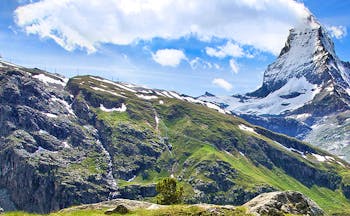Luxury Swiss iconic rail holiday with GoldenPass Line
This 5-night rail tour begins in Geneva if you arrive by air or if arriving by train, you may go straight to Lausanne. You stay in Lausanne for one night before your experience of the GoldenPass Line starts in earnest. On the morning of your departure, travel past the Lavaux Vineyards to Montreux, board the GoldenPass Line, and make your way to Gstaad and Schoenried in the Saanenland. Spend time here enjoying the scenery, the chic boutique shops and cafes, and the abundant walking and cycling paths in this area. You will then re-board the GoldenPass Line and travel on to Zweisimmen, where you change trains and head towards Interlaken, on to Lucerne at the end of the GoldenPass route, for one night before journeying to Zurich for your return home.
Highlights
Geneva • Lausanne • Montreux • GoldenPass Line • Gstaad • Saanenland • Simmental • Interlaken • Lucerne • Zurich
Day by day
Begin your GoldenPass touring holiday by arriving into Geneva, either by air or via Paris by rail. Take an hour or so to explore the old town of this beautiful city and to see the Jet d’Eau erupting out of the waters of Lake Geneva. Then, board a train to Lausanne, where you will spend your first night. Perhaps use the rest of your day or part of the next morning taking in the sight of the fine cathedral, the old town, and port area of Ouchy, home to the Olympic Museum, numerous restaurants, and a scenic waterside boulevard. If staying longer in the area, you can take boat trips on the lake, or rail journeys along the shore, both of which provide and excellent means of viewing the famous Chateau Chillon, jutting out from the rocks across the water’s surface.
In the late morning of your second day (around 11am), take the short train journey from Lausanne to Montreux, ready to board the GoldenPass Line around 45 minutes later. Choose from the panoramic coaches that allow exceptional views or the Belle Epoque classical carriages that provide an authentic Swiss experience. The GoldenPass Line begins in Montreux, known for its Mediterranean climate. Vineyards surround the city and snow-capped Alps provide a constant dramatic backdrop. Though famous for the Montreux Jazz Festival, the city has much more to offer, including the railway that takes visitors across meadows to Rochers-de-Naye at over 2000m above sea level. Occasionally, the Jet d’Eau Fountain in Geneva can be seen from this route. Chillon Castle is perched on a rocky outcrop on Lake Geneva, unmissable for its fairytale beauty, and recognised to be Switzerland’s most popular historical landmark. For a taste of the Swiss chocolate tradition, take the Swiss Chocolate Train to the Maison Cailler to explore the history of chocolate production while letting you craft some chocolate of your own. The train itself is characterised by its Belle Epoque design and original carriages. It travels from Montreux to medieval castle-topped Gruyeres, where 3 museums, characterful cobbled streets with townhouses that have shuttered windows, and pavement cafes await. Back in Montreux, be sure to take the time to visit or observe the Lavaux Terraced Vineyards that stretch across 800 hectares of lakeside land. Perhaps add extra time to your railway journey across Switzerland with the Vineyard Train (or S31) that takes you through the vineyards from Vevey to Puixdoux-Chexbres. Leaving Montreux and Lake Geneva behind you travel first to Sonzier. This quaint village is home to an octogenarian named Heidi who has lived in the railway bend for over 30 years and still waves every train past. Next is Chernex and Chamby, home of the Chamby steam railway. From here you then pick up steep zig-zags gaining height away from the lake. You come next to Les Avants, a higher point on this journey and home to a funicular railway. Moving onwards you reach the startling turquoise waters and wooden bridges of Montbovon and continue to Rossiniere. The next leg of this journey is dominated by pretty, idyllic villages, each with a particular style to their architecture, and each nestled into the slopes at the foot of the Alps, cushioned by abundant trees. The GoldenPass Line will now pass through Chateau-d’Oex and on to Rougemont, where the mountainscapes are dotted with old chalets; an image typical of the Pays-d’Enhaut. Your next stop before reaching Gstaad is the small village of Saanen, a haven for serene strolls, with an abundance of pretty houses and a quaint church. Though internationally renowned, Gstaad has maintained the authenticity of its Alpine character, with quaint streets lined by wooden chalet buildings, small, intimate cafes, and boutique shops. A trip up to so-called Glacier 3000 will afford you stunning views of 24 snow-capped mountains, each reaching above 4000m, including Mont Blanc. The next stop is Schoenried, Gstaad’s peaceful neighbour, to which skiers flock in the winter months or Gstaad itself. In the summer, the slopes are lined with Alpine paths, which can be reached on foot or by cable car.
Spend two full days enjoying all that this beautiful area has to offer. Explore the Alpine meadows on foot, trail the hiking paths across the slopes, and seek out the hidden waterfalls and streams that vein the landscape. From Schoenried, you can enjoy all this, and more, in one sweeping glance. Perhaps on your second day, visit the glacier at Les Diablerets, and take the cable car up to the Rellerli or the chairlift up to the Horneggli for a long, satisfying walk. In Gstaad, make the most of the menagerie of unique boutique shops and try out many of the gourmet restaurants, styled on the traditional Swiss chalets.
On your fifth day, after three nights in Gstaad and Schoenried, re-board the GoldenPass Line for the short journey to Zweisimmen, the gateway from the Saanenland into the Bernese Oberland. Admire the tonal patchwork of fields that sweep the countryside from your carriage as the line descends towards Spiez and Lake Thun. The flourishing natural beauty continues at Oey and the Nature Park of Diemtigtal, where verdant fields are cloaked in purple flowers. Slightly further on, the GoldenPass Line stops off in Wimmis, crowned by a white-washed, dark-roofed castle, which sits high above the town, half-obscured by trees. Venture on next to Spiez, characterised by the church and castle that stands on the marina peninsula, jutting out into Lake Thun. Between Lake Thun and Lake Brienz, at the foot of the Eiger, Monch, and Jungfrau peaks, Interlaken is one of the most well-known stops on this route. Perhaps stop off for a night here, taking the opportunity to witness some of the spectacular natural attractions of the area, including the grottos and pools of the St Beatus Caves, reputedly home to a dragon 2,000 years ago before Beatus the monk drove him away. Perhaps also enjoy the boat trip that takes you over to the Bernese Oberland, or climb up to Harder Kulm to see the stunning views across the region. Lauterbrunnen, the valley of 72 waterfalls is also nearby, quilted in Alpine meadows, punctuated by hidden inns, and recognised as the largest nature conservation area in Switzerland. The GoldenPass Line stops at both the west and east stations in Interlaken before moving on. Progress on to Brienz, on the shores of Lake Brienz. Here the disused farmhouses, stables, bakehouses, and barns of Switzerland are faithfully rebuilt using their original bricks and designs in the charming Ballenberg Open-Air Museum. Stopping here will give you a chance to visit the Brienzer Rothorn Bahn, which covers a huge 1678m altitude difference in less than one hour, skirting sheer cliff faces, with the train’s engine characteristically situated at the back of the train. The train then stops off in Meiringen, beside the Aare Gorge, where limestone has given the Aare River waters an ethereal translucency. Next, the train takes you on to Brunig-Hasliberg, a lesser-known destination for winter sports. Lungern moulds to the irregular outline of Lake Lungern, set on an undulating plain and sparsely spread between small clusters of evergreen trees. Then, the train travels on to the small, traditional village of Giswil, and the lush, rippling agricultural terraces of Kaiserstuhl, which offer a wholly unique landscape that will not be matched in intrigue and innovation elsewhere in Switzerland. Next, pause in Sachseln to witness its beautiful central chateau and gardens. From here, the GoldenPass Line passes through Sarnen, a town smattered with homely chalets, joined by a circular network of roads, looking out onto Lake Sarnen. Your journey next takes you onto the Brunig Line, which links the Bernese Oberland with central Switzerland, from Brienz to Alpnachstad. The track becomes very steep in places, often introducing a rack system in order to negotiate the changing gradients. As well as providing passengers with beautiful views and a thrilling rail experience, it also provides a further insight into the history of transportation in Switzerland, built as it was 128 years ago (as of 2016). The GoldenPass Line draws to a close in Lucerne, on the banks of the lake of the same name. Take your time here to soak up the cosmopolitan atmosphere, and to visit the famous watch shops, nestled into the impressive streets and housed within the grand chalet-esque buildings. You may also choose to extend your stay in Lucerne to encompass a variety of visits and excursions from Lucerne; the Swiss Museum of Transportation; Titlis is the only glacier within reasonable distance, but is definitely worth visiting as it also offers sensational views of snow-capped mountains and Alpine meadows from its above-glacier metal bridge; the green Rigi Mountain captures views across 13 nearby lakes, the Swiss Mittelland, and even directs the eye across the borders into France and Germany. Cog railways from Vitznau and Goldau will take you up to Rigi, or a panoramic cable car can be taken from Weggis. Pilatus Mountain, perhaps the best-known mountain in the area, is the site of many legends of dragons, giants, and ancient royal graveyards, and offers views over 73 Alpine peaks.
On your final day, leave Lucerne by train for Zurich if flying home or take the train from Lucerne to Paris where you change onto the Eurostar for the final leg back to London.
What particularly impresses us each time we use your services is that ‘what we expect we get’ eg car hire, rooms selected, all with no hassle. Not sure how you do it!!Mr W, July 2022
Holiday price guide
From £1,790 per person based on two people sharing a double room and including for second class rail travel. First class supplement from £540.
per person.
Holiday Code CHBR05
Call us on 01392 441245
Luxury Swiss iconic rail holiday with GoldenPass Line
Begin your GoldenPass touring holiday by arriving into Geneva, either by air or via Paris by rail. Take an hour or so to explore the old town of this beautiful city and to see the Jet d’Eau erupting out of the waters of Lake Geneva. Then, board a train to Lausanne, where you will spend your first night. Perhaps use the rest of your day or part of the next morning taking in the sight of the fine cathedral, the old town, and port area of Ouchy, home to the Olympic Museum, numerous restaurants, and a scenic waterside boulevard. If staying longer in the area, you can take boat trips on the lake, or rail journeys along the shore, both of which provide and excellent means of viewing the famous Chateau Chillon, jutting out from the rocks across the water’s surface.
In the late morning of your second day (around 11am), take the short train journey from Lausanne to Montreux, ready to board the GoldenPass Line around 45 minutes later. Choose from the panoramic coaches that allow exceptional views or the Belle Epoque classical carriages that provide an authentic Swiss experience. The GoldenPass Line begins in Montreux, known for its Mediterranean climate. Vineyards surround the city and snow-capped Alps provide a constant dramatic backdrop. Though famous for the Montreux Jazz Festival, the city has much more to offer, including the railway that takes visitors across meadows to Rochers-de-Naye at over 2000m above sea level. Occasionally, the Jet d’Eau Fountain in Geneva can be seen from this route. Chillon Castle is perched on a rocky outcrop on Lake Geneva, unmissable for its fairytale beauty, and recognised to be Switzerland’s most popular historical landmark. For a taste of the Swiss chocolate tradition, take the Swiss Chocolate Train to the Maison Cailler to explore the history of chocolate production while letting you craft some chocolate of your own. The train itself is characterised by its Belle Epoque design and original carriages. It travels from Montreux to medieval castle-topped Gruyeres, where 3 museums, characterful cobbled streets with townhouses that have shuttered windows, and pavement cafes await. Back in Montreux, be sure to take the time to visit or observe the Lavaux Terraced Vineyards that stretch across 800 hectares of lakeside land. Perhaps add extra time to your railway journey across Switzerland with the Vineyard Train (or S31) that takes you through the vineyards from Vevey to Puixdoux-Chexbres. Leaving Montreux and Lake Geneva behind you travel first to Sonzier. This quaint village is home to an octogenarian named Heidi who has lived in the railway bend for over 30 years and still waves every train past. Next is Chernex and Chamby, home of the Chamby steam railway. From here you then pick up steep zig-zags gaining height away from the lake. You come next to Les Avants, a higher point on this journey and home to a funicular railway. Moving onwards you reach the startling turquoise waters and wooden bridges of Montbovon and continue to Rossiniere. The next leg of this journey is dominated by pretty, idyllic villages, each with a particular style to their architecture, and each nestled into the slopes at the foot of the Alps, cushioned by abundant trees. The GoldenPass Line will now pass through Chateau-d’Oex and on to Rougemont, where the mountainscapes are dotted with old chalets; an image typical of the Pays-d’Enhaut. Your next stop before reaching Gstaad is the small village of Saanen, a haven for serene strolls, with an abundance of pretty houses and a quaint church. Though internationally renowned, Gstaad has maintained the authenticity of its Alpine character, with quaint streets lined by wooden chalet buildings, small, intimate cafes, and boutique shops. A trip up to so-called Glacier 3000 will afford you stunning views of 24 snow-capped mountains, each reaching above 4000m, including Mont Blanc. The next stop is Schoenried, Gstaad’s peaceful neighbour, to which skiers flock in the winter months or Gstaad itself. In the summer, the slopes are lined with Alpine paths, which can be reached on foot or by cable car.
Spend two full days enjoying all that this beautiful area has to offer. Explore the Alpine meadows on foot, trail the hiking paths across the slopes, and seek out the hidden waterfalls and streams that vein the landscape. From Schoenried, you can enjoy all this, and more, in one sweeping glance. Perhaps on your second day, visit the glacier at Les Diablerets, and take the cable car up to the Rellerli or the chairlift up to the Horneggli for a long, satisfying walk. In Gstaad, make the most of the menagerie of unique boutique shops and try out many of the gourmet restaurants, styled on the traditional Swiss chalets.
On your fifth day, after three nights in Gstaad and Schoenried, re-board the GoldenPass Line for the short journey to Zweisimmen, the gateway from the Saanenland into the Bernese Oberland. Admire the tonal patchwork of fields that sweep the countryside from your carriage as the line descends towards Spiez and Lake Thun. The flourishing natural beauty continues at Oey and the Nature Park of Diemtigtal, where verdant fields are cloaked in purple flowers. Slightly further on, the GoldenPass Line stops off in Wimmis, crowned by a white-washed, dark-roofed castle, which sits high above the town, half-obscured by trees. Venture on next to Spiez, characterised by the church and castle that stands on the marina peninsula, jutting out into Lake Thun. Between Lake Thun and Lake Brienz, at the foot of the Eiger, Monch, and Jungfrau peaks, Interlaken is one of the most well-known stops on this route. Perhaps stop off for a night here, taking the opportunity to witness some of the spectacular natural attractions of the area, including the grottos and pools of the St Beatus Caves, reputedly home to a dragon 2,000 years ago before Beatus the monk drove him away. Perhaps also enjoy the boat trip that takes you over to the Bernese Oberland, or climb up to Harder Kulm to see the stunning views across the region. Lauterbrunnen, the valley of 72 waterfalls is also nearby, quilted in Alpine meadows, punctuated by hidden inns, and recognised as the largest nature conservation area in Switzerland. The GoldenPass Line stops at both the west and east stations in Interlaken before moving on. Progress on to Brienz, on the shores of Lake Brienz. Here the disused farmhouses, stables, bakehouses, and barns of Switzerland are faithfully rebuilt using their original bricks and designs in the charming Ballenberg Open-Air Museum. Stopping here will give you a chance to visit the Brienzer Rothorn Bahn, which covers a huge 1678m altitude difference in less than one hour, skirting sheer cliff faces, with the train’s engine characteristically situated at the back of the train. The train then stops off in Meiringen, beside the Aare Gorge, where limestone has given the Aare River waters an ethereal translucency. Next, the train takes you on to Brunig-Hasliberg, a lesser-known destination for winter sports. Lungern moulds to the irregular outline of Lake Lungern, set on an undulating plain and sparsely spread between small clusters of evergreen trees. Then, the train travels on to the small, traditional village of Giswil, and the lush, rippling agricultural terraces of Kaiserstuhl, which offer a wholly unique landscape that will not be matched in intrigue and innovation elsewhere in Switzerland. Next, pause in Sachseln to witness its beautiful central chateau and gardens. From here, the GoldenPass Line passes through Sarnen, a town smattered with homely chalets, joined by a circular network of roads, looking out onto Lake Sarnen. Your journey next takes you onto the Brunig Line, which links the Bernese Oberland with central Switzerland, from Brienz to Alpnachstad. The track becomes very steep in places, often introducing a rack system in order to negotiate the changing gradients. As well as providing passengers with beautiful views and a thrilling rail experience, it also provides a further insight into the history of transportation in Switzerland, built as it was 128 years ago (as of 2016). The GoldenPass Line draws to a close in Lucerne, on the banks of the lake of the same name. Take your time here to soak up the cosmopolitan atmosphere, and to visit the famous watch shops, nestled into the impressive streets and housed within the grand chalet-esque buildings. You may also choose to extend your stay in Lucerne to encompass a variety of visits and excursions from Lucerne; the Swiss Museum of Transportation; Titlis is the only glacier within reasonable distance, but is definitely worth visiting as it also offers sensational views of snow-capped mountains and Alpine meadows from its above-glacier metal bridge; the green Rigi Mountain captures views across 13 nearby lakes, the Swiss Mittelland, and even directs the eye across the borders into France and Germany. Cog railways from Vitznau and Goldau will take you up to Rigi, or a panoramic cable car can be taken from Weggis. Pilatus Mountain, perhaps the best-known mountain in the area, is the site of many legends of dragons, giants, and ancient royal graveyards, and offers views over 73 Alpine peaks.
On your final day, leave Lucerne by train for Zurich if flying home or take the train from Lucerne to Paris where you change onto the Eurostar for the final leg back to London.
What particularly impresses us each time we use your services is that ‘what we expect we get’ eg car hire, rooms selected, all with no hassle. Not sure how you do it!!Mr W, July 2022
Holiday price guide
From £1,790 per person based on two people sharing a double room and including for second class rail travel. First class supplement from £540.
per person.
Holiday Code CHBR05
Our prices include
● Flights from UK to Geneva and back from Zurich OR rail travel London to Switzerland and back (first class can be booked at a supplement)
● 4-day Swiss rail flex pass (first class can be booked at a supplement)
● GoldenPass Line journey from Montreux to Luzern
● 1 night’s bed and breakfast in a Superior double room at the Hotel Angleterre et Residence, Lausanne
● 3 nights’ bed and breakfast in a Classic double in the Gstaaderhof, Gstaad or in a Superior mountain room at the Park Hotel, Gstaad
● 1 night’s bed and breakfast in a Classic double room at the Hotel Wilden Mann, Lucerne
● Concierge service and Expressions Holidays regional helpful hints
Our prices do not include
● Early check-in or late check-out at any hotels (although we can arrange this on request at additional cost)
● Any other services not mentioned above, such as transfers and meals except breakfast at hotels
● Personal holiday insurance. This is essential and cover should be in place from when you book the holiday.
● Local tourist tax, usually between Swiss Francs 1 and 3 per person per night, and payable locally to the hotel
● Transfers in Paris if travelling by train from London to Switzerland
● Transfers in Switzerland station to hotel unless offered by your hotel
● Optional extra nights in Geneva, or Zurich
Call us on 01392 441245
Luxury Swiss iconic rail holiday with GoldenPass Line

Hotel Angleterre et Résidence is a charming, traditional, Swiss-style, 4-star hotel in a prime location. Delicious cuisine, exceptional service and immaculate grounds offer guests a truly relaxing and indulgent experience.
Superior double room
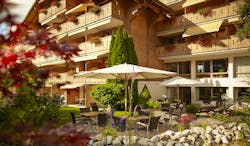
The Hotel Gstaaderhof is a boutique, chalet-style hotel in the centre of the Alpine town of Gstaad. Two restaurants, hotel bar, extensive wellness centre.
Classic double

The Park Gstaad is a 5-star, grand hotel in an alpine chalet-style situated on a slight hill above Gstaad enjoying panoramic views of the surrounding mountains and pastures.
Superior forest view room

Hotel Wilden Mann is a 4-star boutique hotel in an excellent central location. With gourmet cuisine and stylish, comfortable accommodation, the 500 year-old hotel balances its historic and old-world style with elegance and modern facilities.
Classic double room

The Hotel Schweizerhof Luzern is a grand 5-star hotel with an imposing history situated on the shores of Lake Lucerne.
Classic double room
What particularly impresses us each time we use your services is that ‘what we expect we get’ eg car hire, rooms selected, all with no hassle. Not sure how you do it!!Mr W, July 2022
Holiday price guide
From £1,790 per person based on two people sharing a double room and including for second class rail travel. First class supplement from £540.
per person.
Holiday Code CHBR05
Call us on 01392 441245
Holiday prices
| Date | By air and train | By train throughout | ||
|---|---|---|---|---|
| 1 Jan 2024-31 Dec 2024 | £1,710 | £1,790 |
| Description | Date | By air and train | By train throughout | ||
|---|---|---|---|---|---|
| Upgrade to 1st class rail | 1 Jan 2024-31 Dec 2024 | £260 | £540 |
What particularly impresses us each time we use your services is that ‘what we expect we get’ eg car hire, rooms selected, all with no hassle. Not sure how you do it!!Mr W, July 2022
Holiday price guide
From £1,790 per person based on two people sharing a double room and including for second class rail travel. First class supplement from £540.
per person.
From about
Holiday Code CHBR05
Our prices include
• Flights from UK to Geneva and back from Zurich OR rail travel London to Switzerland and back (first class can be booked at a supplement)
• 4-day Swiss rail flex pass (first class can be booked at a supplement)
• GoldenPass Line journey from Montreux to Luzern
• 1 night’s bed and breakfast in a Superior double room at the Hotel Angleterre et Residence, Lausanne
• 3 nights’ bed and breakfast in a Classic double in the Gstaaderhof, Gstaad or in a Superior mountain room at the Park Hotel, Gstaad
• 1 night’s bed and breakfast in a Classic double room at the Hotel Wilden Mann, Lucerne
• Concierge service and Expressions Holidays regional helpful hints
Call us on 01392 441245
Luxury Swiss iconic rail holiday with GoldenPass Line
About Lake Geneva
An Expressions tailor-made holiday to Lake Geneva is an ideal way to experience the beauty and serenity of this Swiss region. Marking a crescent-shaped segment of the France-Switzerland border, Lake Geneva is named after diplomatic, historic Geneva. French spa towns on the southern shore look across to the Swiss Riviera on the northern side, characterised by grand palatial buildings and hotels, promenades lined with trees, and tumbling fountains. Lake Geneva is popular for water sports and hiking holidays, as well as relaxing lakeside spa breaks; and, in the winter, it is close enough to the ski slopes to make a very laid-back skiing destination. Chic towns and villages sit behind rows of palm trees, basking in the Mediterranean climate, sheltering gourmet restaurants, luxury boutique shops, and a range of stunning Swiss hotels. Prestigious buildings, at the seat of European politics, call these idyllic towns home, adding a sense of importance to the atmosphere of the peaceful streets. There is perhaps nowhere more glamorous in Switzerland than Lake Geneva, and nowhere where the history and culture is so grand and visually captured in the buildings, parks, and gardens. With such close proximity to Geneva airport and the major railway lines, Lake Geneva is an excellent first or last stop on a touring holiday.
Highlights of Lake Geneva
Montreux, on the most eastern point of the lake is most famous for the Montreux Jazz Festival, which is held in international esteem. One of the most iconic sights, for both Switzerland and Montreux, is of Chillon Castle, jutting out on a rocky outcrop into the lake waters. This castle cannot be missed because of its fairy-tale beauty. You can also begin to explore the landscape around Montreux by rail. One railway takes you across Alpine meadows to Rochers-de-Naye at more than 2000m above sea level, from which you can sometimes see the Jet d'Eau in Geneva. The Swiss Chocolate Train, adorned with lavish Belle Epoque carriages, travels to the village of Gruyeres, where characterful old cobbled streets are lined with townhouses containing cafes and three museums. An imposing medieval castle sits at the top of the village. You can also reach the Maison Cailler on the Chocolate Train, where you learn about traditional Swiss chocolate-making and even make some of your own. The Vineyard Train (number S31) will take you through the 800 hectares that make up the Lavaux Terraced Vineyards from Vevey to Puidoux-Chexbres. The vineyards are the largest living cultural site in Switzerland and a recognised UNESCO World Heritage Site. Further west from the Lavaux Vineyards is Lausanne, home to the International Olympic Committee headquarters, but perhaps best known for simply being a particularly romantic and beautiful Swiss town. Gardens, promenades, and lakeside pathways ensure that your days here are as picturesque as they are cultural. At Lausanne's heart stands the Cathedral, believed to be one of Europe's most beautiful Gothic monuments. The purple and orange hues of its two main spires are visible throughout the town. It was originally built in the 12th and 13th centuries. In contrast with the Cathedral, immersed in the history of the cobbled Old Town, a new Olympic Museum has recently opened. Interactive displays illustrating the colourful history of the games are spread over three levels and include more than 1,000 objects and 150 screens. One of the highlights of the museum, however, is the Olympic Park. The artworks, sports sculptures, and beautiful patches of well-maintained nature provide a stunning setting for this modern cultural venture. From here, you can wander down the promenade at Ouchy, an area that is unrelentingly popular with residents. This promenade takes you to the Haldimand Tower, the Bellerive Swimming Pool, the Chateau d'Ouchy, and the port.
Cultural highlights of Lake Geneva
Any stay on Lake Geneva remains incomplete without a visit to the city that gives it its name. One of the key features of Geneva's cultural heritage is its place as the origin of fine watch-making. Workshops, boutiques, and museums all provide an insight into this prestigious craft. Even the Jet d'Eau fountain bears some connection, as it originally harnessed the power of the Rhone for the craftsmen of Geneva. Today, it acts as a captivating, animate monument to the skills, craft, and natural forces of the city. Geneva is also home to the Palais des Nations, the European headquarters of the UN. Guided tours take visitors through the building, which seems to blend geometric modern design with classical, palatial style. Geneva's Old Town, or Vieille-Villa, is the largest in Switzerland, laced with narrow alleyways and charming squares, and centred around the St Pierre Cathedral. 157 steps will take visitors to the top of the cathedral tower in order to appreciate the remarkable views over the fascinating jumble of unique townhouses. A very unique feature of Geneva is the Flower Clock in the Jardin Anglais. This precise and beautiful clock has the longest second hand in the world. Visitors interested in Swiss art and modern culture should spend an afternoon in the Quartier des Bains, wandering around the MAMCO and the Centre d'Art Contemporain before enjoying dinner in a chic bistro. Mediterranean Carouge is Switzerland's gateway to the south, with abundant Sardinian style. Finish your exploration with one of the four world-exclusive museums: the International Museum of the Red Cross and Red Crescent, Le Musee International de la Reforme, the Patek Philippe Museum, and the Bodmer Foundation Library and Museum.
Festivals in Lake Geneva
Much of the canton of Geneva's culture is built around a celebration of its history and traditions. Perhaps one of the liveliest celebrations is the Oktoberfest, though many more unusual festivals prove equally enjoyable. In the first two weeks of February, the Antigel Festival brings a variable programme of music, dance, and other performances to the less likely stages. In March, the International Geneva Motor Show, largest of its kind in Europe, unveils a range of new innovative designs at the Palexpo Exhibition Centre. Similarly, in April you can visit the International Exhibition of Inventions, New Techniques, and Products in the same venue. On specific dates of the year, usually mid-May, a selection of museums stay open for the whole night, an event that is also celebrated in a number of bars. Also in May is a Day of Open Wineries, where upwards of 90 wineries open their doors for free to wine-touring visitors. A charge of 5CHF at one winery will enable you to taste wines at every other winery for no further charge. In June and July, parks, gardens, and secluded outdoor spots on the lake shores play host to a range of live music and DJ sets at the Ecoutes au Vert Festival. In the middle of June each year, Lake Geneva is transformed into the largest sailing regatta in Europe, with over 500 boats competing. Geneva's largest music festival is the Geneva Music Festival in late June, specialising in a range of musical genres, and accompanied by an array of food stalls. Impossible to forget is the Montreux Jazz Festival, founded in 1967, that brings an eclectic range of performances to the lakeside stages, not limited to Jazz. The Cine Transat, hosted in one of Geneva's parks, features a series of French and English films. The Prelude to the Geneva Festival and the Geneva Festival itself take place from the middle of July until the first week of August and are widely believed to be the highlight of summer in the region. Carnival rides, concerts, stalls with Swiss delicacies and street food, parades, and variety performances take over the lake shores, topped off with unique firework displays each and every night. The Festival de la Batie from the end of August to mid-September exhibits the works of many local artists from a range of disciplines in Batie Park. The Nuit des Bains sees several galleries in the Quartier des Bains open their doors for free. For a taste of Geneva's history, watch l'Escalade in the Old Town in the second week of December, which commemorates that defence of the city against the Duke of Savoy in 1602.
Gastronomy in Lake Geneva
With over 1,000 restaurants, Geneva is recognised as the capital of culinary delicacies in Switzerland. For decadent dining, choose one of the hotels that line the lake shores; for foreign cuisine, head to the Paquis district; for traditional Swiss dishes, dine in Geneva's Old Town; for Italian restaurants and French cafes, go to Eaux Vives; and for experimental, chic restaurants, eat in Carouge. Some ingredients to look out for in particular are cheeses from Gruyere, oil from Severy, charcuterie, perch, fera, char, and leeks. Vaud, the region in which Lake Geneva sits, is Switzerland's largest wine-growing region, and the most prominent grapes are Chasselas, Pinot Noir, and Gamay. You may also discover some Tartiflette, which originated over the French border in Haute-Savoie, made with Reblocohon cheese.
Call us on 01392 441245
Luxury Swiss iconic rail holiday with GoldenPass Line
About Saanenland
An Expressions tailor-made holiday to Saanenland allows for exploration of this beautiful and peaceful yet bustling Swiss region. Considered a part of the Bernese Oberland, the Saanenland is rich enough to be a region in its own right. Central Gstaad offers a unique and authentic Swiss holiday experience, with quirky shops and restaurants to suit all tastes. Its many luxury chalets remain popular with A-List celebrities. Surrounding Gstaad are nine other villages, such as Schonried, Zweisimmen, Saanen, and Saanenmoser, which prove to be continually popular as winter sports destinations, particularly with skiers. In the summer, however, the Saanenland offers a wealth of exploratory and sporting diversity. Priding itself on being a haven of wellbeing, the Saanenland offers a taste of idyllic nature, whilst remaining one of Switzerland's chicest locations.
Highlights of Saanenland
The Saanenland is based in the convergence of five valleys. Streams, lakes, forests, and verdant slopes therefore provide a 360 degree backdrop to your stay here. The isolated and little-known Lauenensee, for example, is a bubble of peace and tranquillity, with pathways around the lake shores that lead up to a waterfall that crashes between jutting rocks on its way down the mountainside. In the winter, the lake freezes over, and there is every chance you may be the first to leave your footprints in the snow. Gstaad is perhaps what makes the Saanenland so well-known and so deserving of its own individual place as a region in our overview of Switzerland. The traffic-free main promenade is lined with perfectly maintained, authentic Swiss chalets, complete with dark wood peaked roofs, shuttered windows, and balconies. These chalets contain intriguing boutique shops and some of Gstaad's 100 restaurants, which serve anything from Swiss raclette to gourmet, refined cuisine. In the landscape around Gstaad lie a huge range of summer sports opportunities. More than 300km of hiking paths take you up and around the mountains and deep into the valleys. Mountain-biking, paragliding, and golf also remain continually popular with seasonal guests. Schonried hosts a famous toboggan run, while exhilarating downhill scooter rides can be enjoyed from Wispile to Gstaad or Sparenmoos to Zweisimmen. On the River Saane, you can wrestle the torrent on a raft or in a canoe. Schonried, on the so-called ‘sun terrace' above Gstaad, is one neighbouring village that is of particular interest. Schonried is an excellent starting point for many hikes or long walks, due to its sublime scenery and many cableways and high-altitude railways. The picture-postcard village of Zweisimmen is known as the Gateway to the Saanenland. Most notably, however, it is an important station on the iconic route of the GoldenPass Line, and the railway line that links the Bernese Oberland to Montreux. You may wish to visit Zweisimmen for the Rinderberg cable car, which takes you up to one of the largest ski areas in the Saanenland in winter, and up to an intricate network of walking routes in the summer. Various themed trails take you through the different elements of the local culture, such as around the authentic farmhouses with their carved murals, or high up in the mountaintops. There are ten villages in total in the Saanenland, each of which is charming in its own right. Should you have time, we would not discourage visiting as many of these as possible to admire the scenery from multiple angles.
Festivals in the Saanenland
A lesser-known highlight of the area's winter sports opportunities is the Zweisimmen Snow Games in January, featuring a waterslide through the Rinderberg water, ski-cross races, downhill mountain biking, and freestyle parkour. February and March in Gstaad are made all the more enchanting by the Sommets Musicaux de Gstaad, a small classical music festival. The summer sees two large tennis tournaments come to Gstaad: the J. Safra Sarasin Swiss Open Gstaad, and the Ladies Championship Gstaad. The Davidoff Saveurs Gstaad celebrates authentic local cuisine and wine in July. For more traditional celebrations, attend the Suufsunntig, an Alpine festival from July to August hosted on the nearby mountains. Also in the summer, from July to September, is the Gstaad Menuhin Festival, which honours the violinist and conductor after which it was named, with numerous performances of haunting classical music. The Hublot Polo Gold Cup Gstaad in August sees jockeys from all over the world racing Arab horses. Something a little different can be enjoyed at the Country Night Gstaad in September. Across the border into the canton of Vaud is Chateau-d'Oex, which hosts the International Balloon Festival, the most important balloon event in the Alps.
Gastronomy in the Saanenland
As in much of Switzerland, cheese plays an integral part in the local gastronomy of Saanenland. In Chateau-d'Oex and Rougemont, be sure to try the Etivaz cheese, which is made in the cauldrons of Alpine huts. In a quaint gourmet restaurant in Gstaad or on the lush rolling pastures of Schonried, try the fondue or raclette in the environment in which it was intended to be eaten. Local farms, particularly dairy farms, offer breakfast, lunch, and dinner service, with the opportunity to try some of their homemade produce and watch as the cheese is made.

